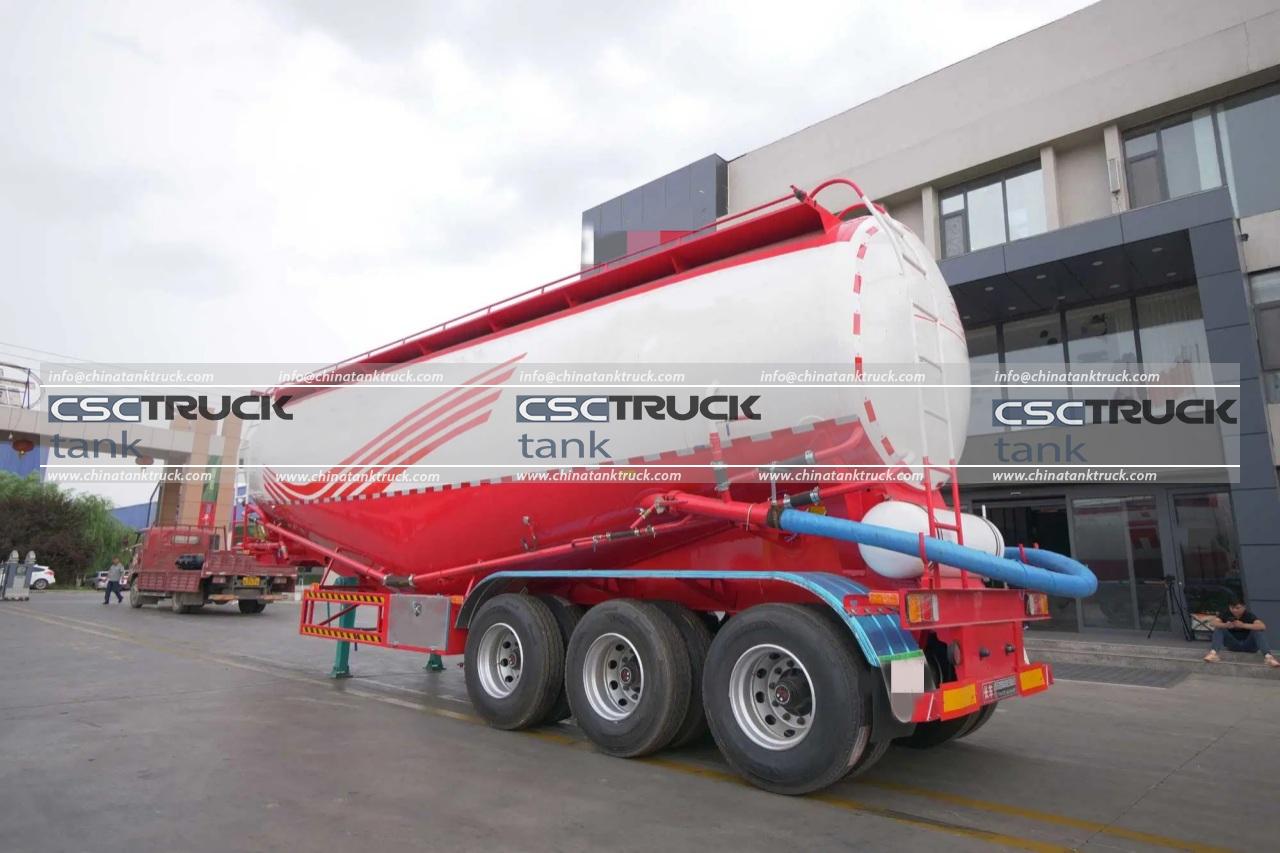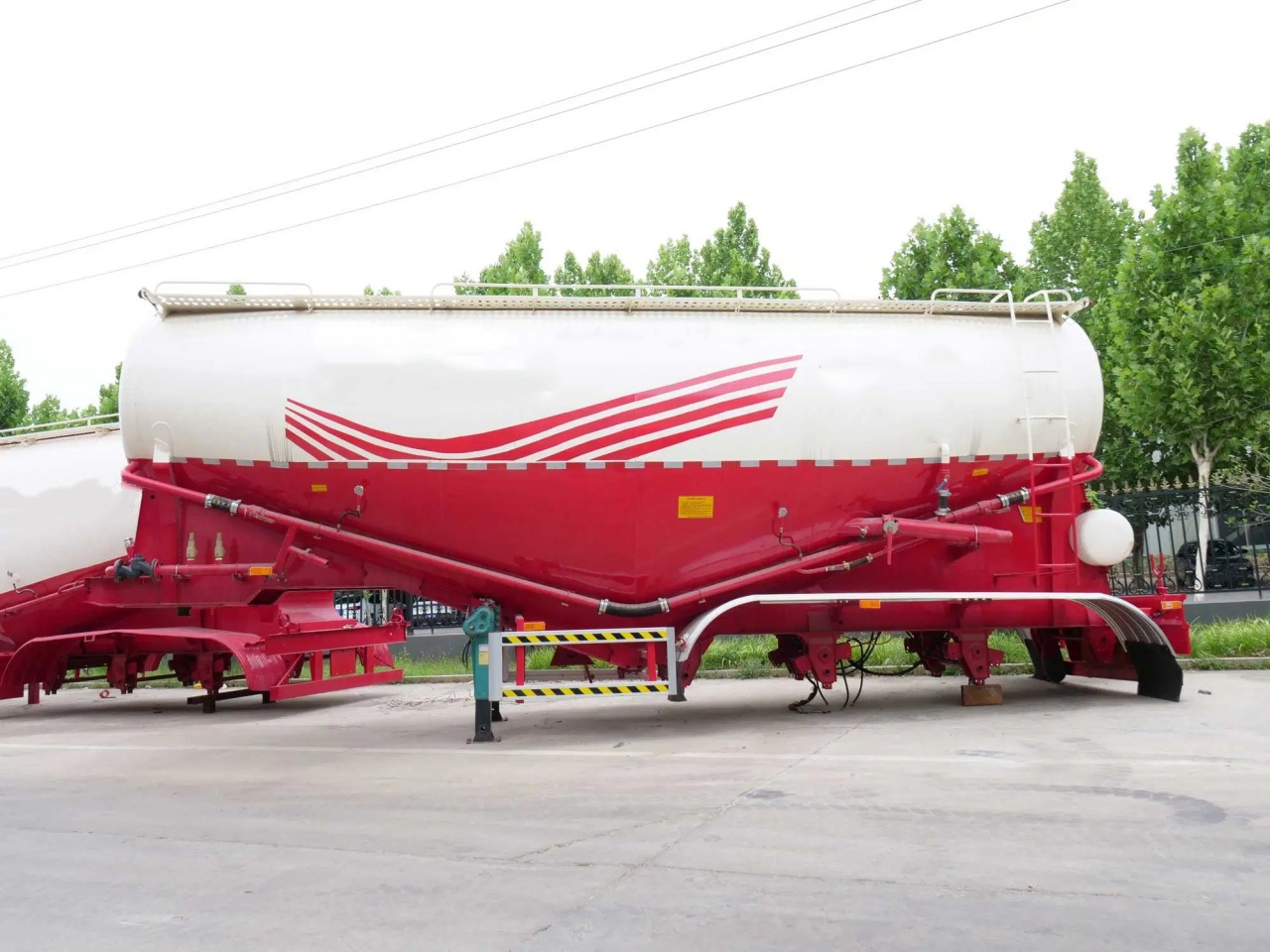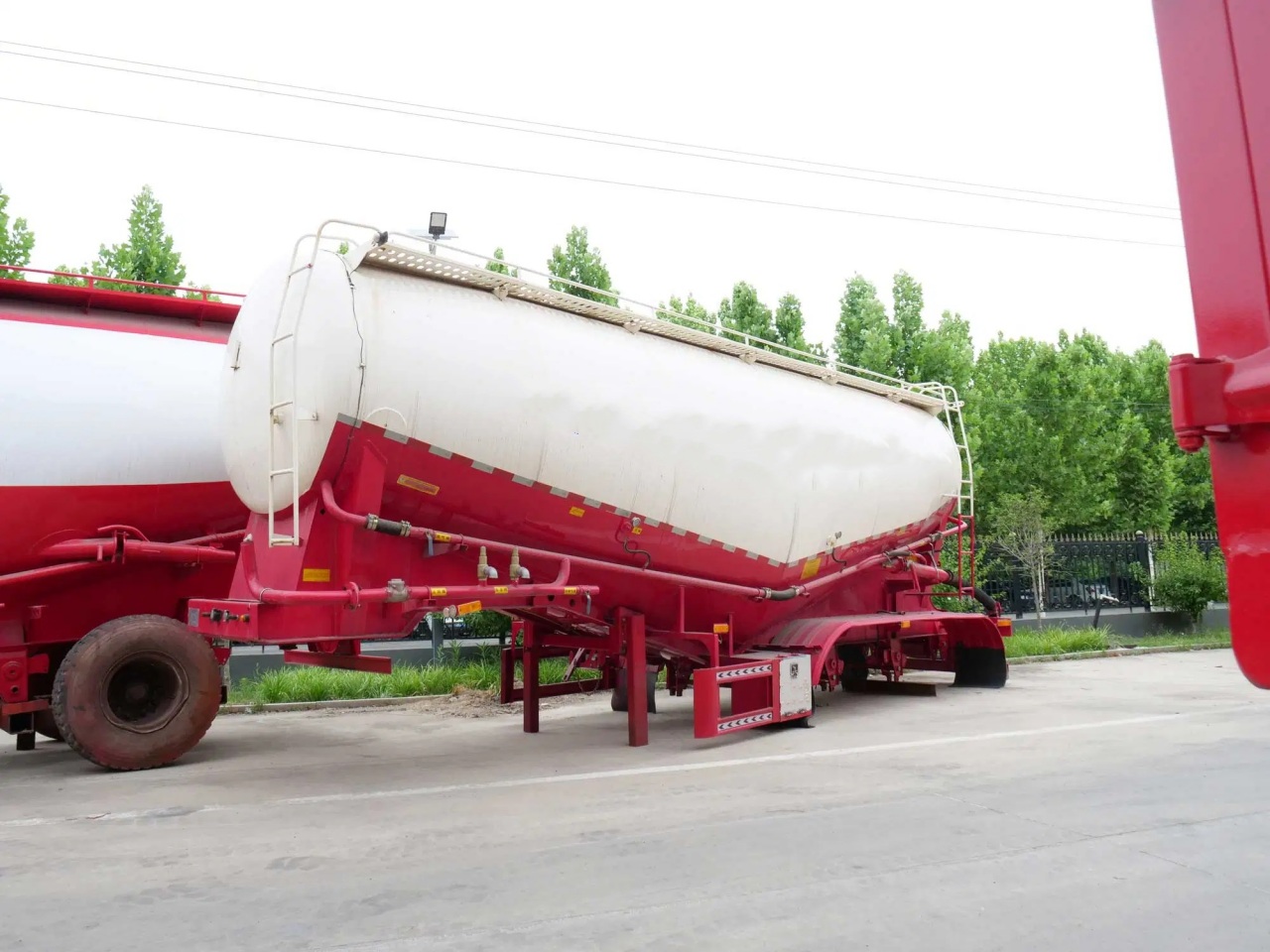A dry bulk trailer is a specialized type of semi-trailer used for transporting dry, powdered, or granular materials in bulk quantities. These trailers are designed to carry commodities such as cement, flour, sugar, sand, lime, plastic pellets, and other dry materials that require a sealed and efficient transportation method. Dry bulk trailers are commonly used in industries such as construction, food processing, manufacturing, and chemical production.
Design and Structure of a Dry Bulk Trailer
Dry bulk trailers are typically cylindrical or oval, with a series of internal compartments that allow for the separation and transport of different types of materials. These trailers are made of durable materials like aluminum or stainless steel to prevent contamination and corrosion. Some of the key structural components include:
1. Hopper Compartments
Hopper compartments are the main storage areas of the dry bulk trailer. They are designed with sloping walls that allow for the efficient unloading of materials through gravity. The number of hoppers varies depending on the trailer’s design and capacity.
2. Manholes and Loading Hatches
Located at the top of the trailer, manholes and loading hatches provide access for loading dry bulk materials. They are securely sealed to prevent contamination, moisture intrusion, and spillage during transit.
3. Pneumatic Discharge System
Most dry bulk trailers are equipped with a pneumatic discharge system that uses compressed air to push materials out of the trailer. This system allows for a controlled and efficient unloading process, reducing material loss and ensuring a clean transfer to storage facilities.
4. Air Compressors
Air compressors are used to provide the necessary airflow for the pneumatic discharge system. They help in fluidizing the dry bulk materials, making them easier to unload without manual intervention.
5. Piping and Valves
The piping and valve system controls the flow of materials during unloading. Valves help regulate the pressure and direct the material flow to the designated discharge outlets.

Types of Dry Bulk Trailers
There are different types of dry bulk trailers designed for specific applications. The 3 most common types include:
1. Pneumatic Dry Bulk Trailers
Pneumatic dry bulk trailers use a fully enclosed tank and an air-powered system for unloading materials. These trailers are ideal for transporting fine, powdered substances like cement, flour, and fly ash, as they prevent contamination and minimize dust emission.
2. Bottom Drop Dry Bulk Trailers
Bottom drop trailers use gravity to discharge materials through a series of bottom hatches. These trailers are commonly used for transporting coarse materials such as sand, gravel, and certain agricultural products.
3. Vacuum Dry Bulk Trailers
Vacuum dry bulk trailers are equipped with a vacuum system that enables both loading and unloading of materials. They are commonly used for industrial applications where handling sensitive materials with minimal contamination is required.
Applications of Dry Bulk Trailers
Dry bulk trailers are essential in a variety of industries, including:
1. Construction Industry
Construction companies rely on dry bulk trailers to transport materials like cement, lime, and sand, which are crucial for infrastructure projects.
2. Food Industry
The food industry uses dry bulk trailers to transport products such as flour, sugar, starch, and grains. These trailers ensure that food-grade materials remain uncontaminated and safe for consumption.
3. Chemical Industry
Chemical manufacturers use dry bulk trailers to transport materials such as plastic pellets, resins, and other industrial chemicals used in production processes.
4. Agriculture Industry
Agricultural businesses use dry bulk trailers to transport animal feed, fertilizer, and other dry commodities essential for farming operations.

Advantages of Using a Dry Bulk Trailer
Using dry bulk trailers offers several advantages over traditional bulk transportation methods:
1. Efficient Material Handling
The design of dry bulk trailers allows for easy loading and unloading, reducing labor costs and improving efficiency.
2. Protection Against Contamination
Enclosed compartments prevent external contaminants, moisture, and debris from affecting the transported material, ensuring product integrity.
3. Reduced Transportation Costs
By transporting large quantities of dry bulk materials in a single trip, dry bulk trailers help reduce overall transportation costs.
4. Environmentally Friendly
Pneumatic unloading systems minimize dust and spillage, making them an environmentally friendly option for bulk material transportation.
Factors to Consider When Choosing a Dry Bulk Trailer
When selecting a dry bulk trailer, several factors should be considered to ensure it meets operational needs:
1. Trailer Capacity
The required capacity will depend on the type of material being transported and the volume needed per trip.
2. Material of Construction
Aluminum and stainless steel trailers offer different benefits in terms of weight, durability, and corrosion resistance.
3. Unloading Mechanism
Different trailers use gravity, pneumatic, or vacuum systems for unloading. The choice depends on the type of material and unloading requirements.
4. Regulations and Compliance
Ensure that the dry bulk trailer meets local and international transportation regulations, especially when handling food-grade or hazardous materials.

Maintenance and Safety Tips for Dry Bulk Trailers
Proper maintenance and adherence to safety standards are crucial for the efficient operation of dry bulk trailers. Here are some key tips:
1. Regular Inspection
Routine inspections help identify wear and tear, leaks, and potential mechanical issues that could affect performance.
2. Cleaning and Sanitation
For food-grade trailers, thorough cleaning is essential to prevent cross-contamination. Regular washing and sanitizing of the interior are recommended.
3. Checking Air Compressors
Since pneumatic systems rely on air compressors, regular checks and maintenance are necessary to ensure proper functionality.
4. Monitoring Piping and Valves
Ensure that pipes and valves are free from blockages or leaks to maintain efficient material flow.
5. Compliance with Safety Regulations
Operators should be trained in proper loading and unloading procedures to minimize the risk of accidents.
Conclusion
A dry bulk trailer is an essential component of bulk material transportation, offering efficiency, cost-effectiveness, and protection against contamination. With different types and designs available, selecting the right dry bulk trailer depends on the type of material, unloading mechanism, and industry requirements. By following proper maintenance and safety protocols, operators can ensure the longevity and reliability of their dry bulk trailers, making them an indispensable asset in various industrial applications.


